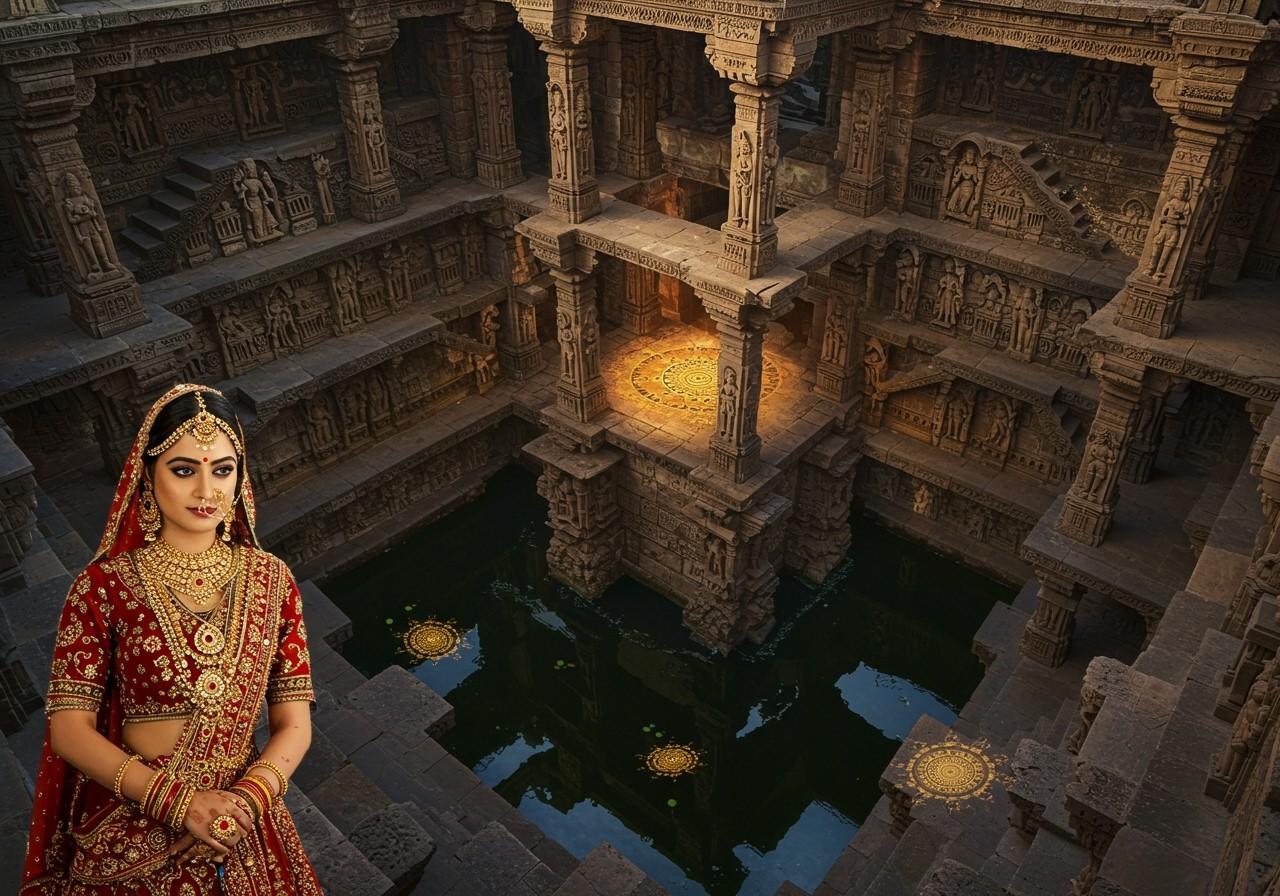
Rani Ki Vav, a breathtaking example of 11th-century Indian architecture, is now featured on the ₹100 note. This magnificent stepwell, located in Patan, Gujarat, is a UNESCO World Heritage Site and a testament to India’s rich cultural legacy. Let’s delve into the reasons behind its selection for the currency note and its significance in representing India’s cultural identity.
Historical Background
Rani Ki Vav was constructed in the 11th century by Queen Udayamati to honor her husband, King Bhima I of the Solanki dynasty. Situated in Patan, Gujarat, this stepwell exemplifies the traditional Indian approach to water conservation. Stepwells like Rani Ki Vav played a crucial role in water management and also served as vital social and religious hubs. Its architectural style, known as Maru-Gurjara, is distinguished by elaborate carvings and intricate sculptures.
Architectural Significance
Rani Ki Vav boasts unique architectural elements, including seven levels of stairs embellished with ornate sculptures and intricate carvings. The walls and pillars showcase depictions of Hindu deities, mythological figures, and scenes from history. A prominent theme in the carvings is the Dasavatara, the ten incarnations of Lord Vishnu. These artistic details demonstrate the exceptional skill of the artisans and emphasize the cultural richness of that era.
Recognition and Preservation
Once a forgotten treasure, Rani Ki Vav has been rediscovered and recognized as a UNESCO World Heritage Site. This recognition underscores its immense historical and cultural value. The Archaeological Survey of India (ASI) has been instrumental in its restoration and ongoing preservation. This has not only boosted tourism but also provided a significant boost to the local economy of Patan. However, preserving this historical site presents challenges, including environmental factors and the need for sustainable tourism practices.
Symbolism on the ₹100 Note
The inclusion of Rani Ki Vav on the ₹100 note is a powerful symbol of India’s architectural heritage. It embodies the harmonious blend of art, culture, and history that defines India. The Reserve Bank of India (RBI) aims to foster cultural pride and awareness through such symbolic representations. This decision has far-reaching implications for national identity and the promotion of India’s heritage on a global scale.
Cultural Impact and Public Perception
Rani Ki Vav’s presence on the currency note has sparked increased awareness and appreciation of Indian heritage among both Indian citizens and international tourists. Educational initiatives and cultural programs further enhance public understanding of this remarkable site. The currency note itself acts as a unique tool for cultural diplomacy, fostering pride in India’s rich historical legacy.
Shop Traditional Puja Items Inspired by Rani Ki Vav’s Heritage
At Poojn.in, we offer a wide selection of authentic puja items that connect you with India’s rich cultural heritage, much like the iconic Rani Ki Vav featured on the new ₹100 note, introduced after demonetization with its distinctive lavender color and Braille security features.
-
Decorative Items for Sacred Spaces: Discover our collection of marble dust murtis, handcrafted Ganesh and Lakshmi idols (starting at ₹379), and temple decoration items inspired by ancient Indian architecture, reflecting the craftsmanship and artistry found in historical monuments like Rani Ki Vav.
-
Water-Related Puja Items: Explore our range of traditional copper and brass kalash, pure silver items for jal puja, and other specialized items for water-based rituals, connecting you to the traditional water conservation practices symbolized by stepwells like Rani Ki Vav.
These items allow you to maintain a sacred connection to our cultural roots while enjoying the convenience of online shopping. All products are carefully chosen to adhere to traditional specifications and are delivered across India.
Prices are subject to change. Please visit our website for the most up-to-date pricing.
Frequently Asked Questions
What is Rani Ki Vav? Rani Ki Vav is an intricately carved stepwell located in Patan, Gujarat, and recognized as a UNESCO World Heritage Site.
Why is it on the ₹100 note? The Reserve Bank of India chose Rani Ki Vav to showcase India’s rich architectural heritage and cultural achievements on the new lavender-colored ₹100 note, introduced after demonetization, with its unique features like Braille prints.
What is its historical significance? Built by Queen Udayamati in the 11th century in memory of her husband, King Bhimdev I, it exemplifies ancient water management techniques and served as a social and religious gathering place.
How does it reflect Indian culture? Rani Ki Vav’s intricate sculptures and carvings, depicting Hindu deities and mythological scenes, showcase the artistic brilliance and cultural richness of ancient India.
Conclusion
Rani Ki Vav’s presence on the ₹100 note serves as a powerful reminder of India’s magnificent past and vibrant culture. It stands as a symbol of the nation’s rich traditions and artistic achievements. By featuring it on the currency, the Reserve Bank of India celebrates and shares this heritage with every Indian and the world. As we handle this note, we hold a piece of history, connecting us to our roots and the enduring legacy of our ancestors.


